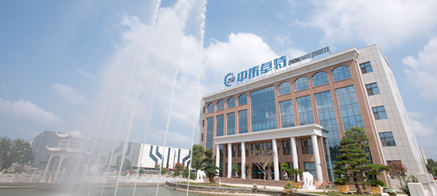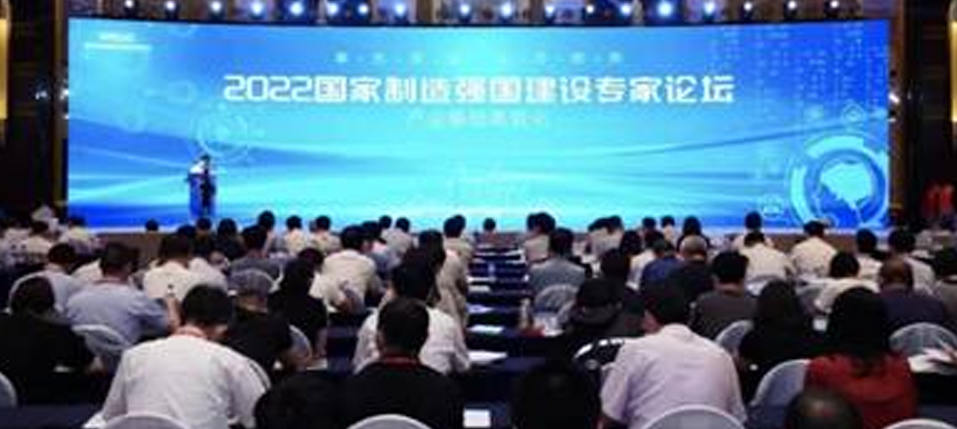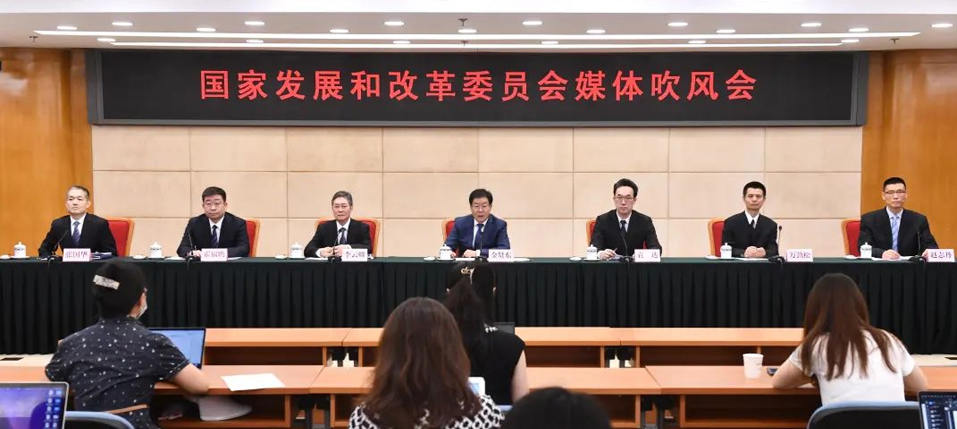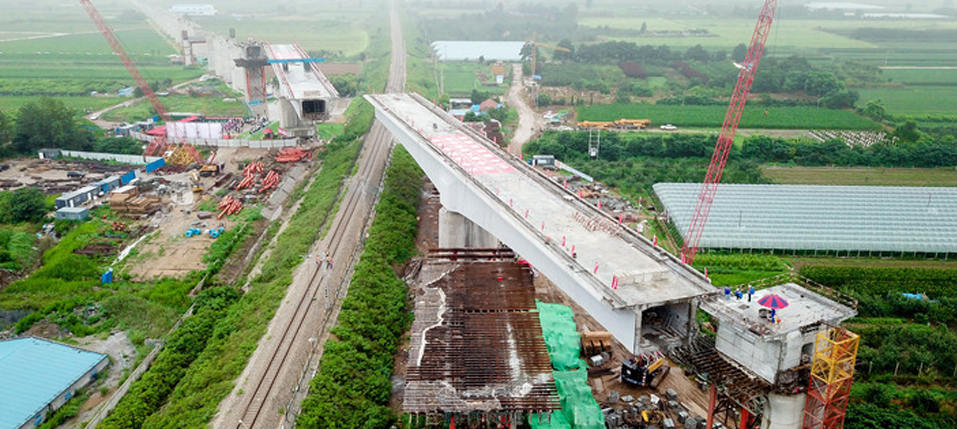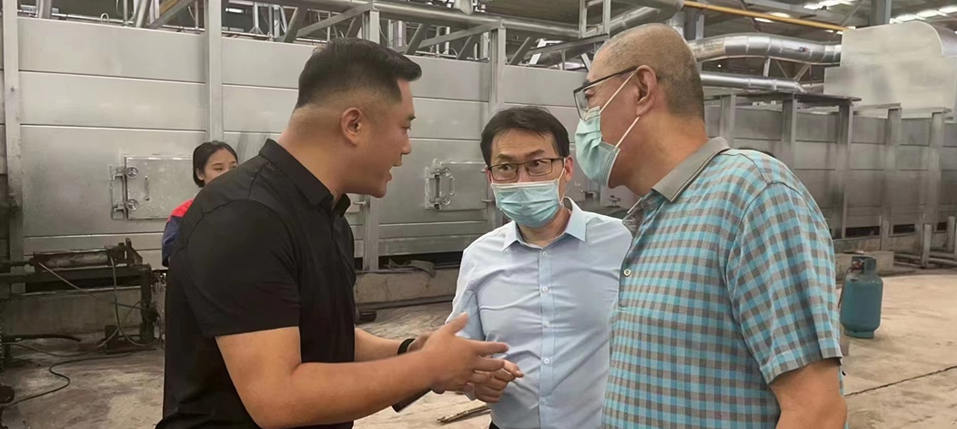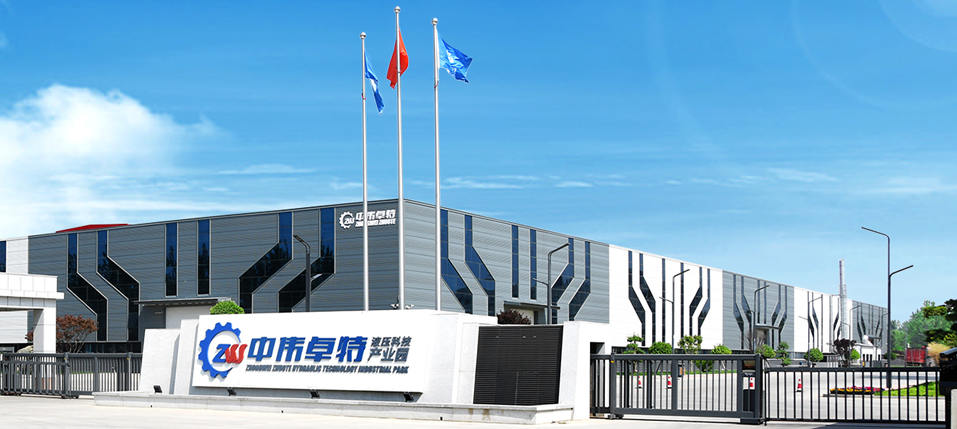بفضل المرونة القوية والإمكانات الكبيرة، من المتوقع أن يستمر اقتصاد بلدي في التعافي في النصف الثاني من العام
On July 15, the National Bureau of Statistics announced the economic "transcript" for the first half of the year. In the first half of the year, the GDP was 56,264.2 billion yuan, a year-on-year increase of 2.5% at constant prices. Among them, in the second quarter, China's economy withstood the severe shock caused by unexpected unexpected factors, and the GDP maintained growth. How is China's economic situation? What pressures are you facing? After the "mid-term exam", how will China's economy develop again? On July 15, China News Agency's "National Forum: Economic Situation Analysis Meeting in 2022" was held. Many experts said that in the first half of the year, China's various policies to stabilize the economy have made positive progress, and my country's economy is expected to continue to rebound in the second half of the year. Zhang Yansheng: China's economy is showing a recovery performance, and three major policy focus points are recommended in the second half of the year Zhang Yansheng, chief researcher of the China Center for International Economic Exchanges, said that since the second quarter, major indicators such as import and export, manufacturing purchasing managers' index (PMI), and industrial added value have all shown the characteristics of "stabilizing in May and entering the expansion range in June". The economy showed a recovery performance in the quarter. Talking about the difficulties facing the current economy, Zhang Yansheng said that the first difficulty in the current economic recovery growth is demand, especially consumer demand. In the early stage, several first-tier cities in Shanghai, Shenzhen, and Beijing were greatly affected by the epidemic. The total retail sales of consumer goods began to recover gradually from April, but it has not stabilized yet. Zhang Yansheng said that in the second half of the year, China's economy is still facing international and domestic risks, mainly international risks. At present, the world is facing high inflation pressure. In June, the inflation rate in the United States reached 9.1%, the euro area reached 8.6%, and the inflation rate in major countries reached about 8% to 9%. If the anti-inflationary pressure increases, the world will inevitably fall into recession Therefore, the intensity of inflation and anti-inflation will have a greater impact on China's economy in the second half of the year. In addition, the Sri Lankan economic crisis, the global food and energy crisis, and the conflict between Russia and Ukraine will also bring uncertain risks to the global economy and the Chinese economy. "There will be many unstable and uncertain factors in the second half of the year, so we must continue to stabilize the economy and growth." Zhang Yansheng suggested that the policies in the second half of the year should focus on three aspects: first, coordinate scientific epidemic prevention and comprehensive economic and social development. The second is to promote the full start of national infrastructure projects; the third is to implement precise policies and introduce more direct and targeted measures to stabilize consumption. Zhang Jianping: China's foreign trade growth exceeded expectations in the first half of the year Zhang Jianping, deputy director of the Academic Committee of the Institute of International Trade and Economic Cooperation of the Ministry of Commerce, said that in the first half of the year, there were a series of bright spots in China's foreign trade: the proportion of general trade further increased, indicating that the transformation and upgrading of foreign trade enterprises has accelerated and their competitiveness has improved; the growth rate of trade with markets along the "Belt and Road" Higher than the overall, new progress has been made in the diversification of the international market; private enterprises have increasingly become the main force in foreign trade; cross-border e-commerce, overseas warehouses and other new trade formats have grown rapidly, which have played an important supporting role in the overall foreign trade growth. Zhang Jianping said that in the first half of the year, China's foreign trade achieved a growth of 9.4% on the basis of last year's high base. Among them, the total import and export volume and total export volume in June both hit a new monthly high, which laid a solid foundation for stabilizing foreign trade in the second half of the year. Talking about the challenges facing China's foreign trade in the second half of the year, Zhang Jianping believes that the current global energy crisis and food crisis will impact the global market to a large extent and have a shrinking impact on demand. The WTO also lowered its forecast for global trade growth from 4.8% to around 3%. Therefore, foreign trade companies need to closely track market changes and make good use of dividends such as pilot free trade zones. "Although some of China's foreign trade orders are indeed transferred to Vietnam and India, the added value of 'Made in Vietnam' is limited, and India is limited by problems such as weak infrastructure construction. It is not easy to catch up with China." Zhang Jianping said. Guo Liyan: China has the confidence and ability to continue to stabilize prices Guo Liyan, director of the Comprehensive Situation Research Office of the China Academy of Macroeconomics, pointed out that global inflation is currently high. In contrast, China's just-released mid-year economic data shows that the national economy has stabilized and rebounded, demonstrating industrial resilience and market potential. Stabilizing prices in China has also created a good foundation and environment for better stabilizing the economic market. "The fact that China's prices can maintain moderate growth is a rare achievement in macroeconomic governance." She said that in the first half of the year, the national consumer price (CPI) rose by 1.7% year-on-year; the producer price index (PPI) rose continuously this year. 6 months down. In addition, the scissors difference between upstream and downstream price changes narrowed to less than 4 percentage points in June, indicating that the coordination of upstream and downstream price operations is also gradually increasing. In Guo Liyan's view, China's achievements in stabilizing prices have not come easily. There are two main points: one is to ensure the supply and price of basic energy; Guo Liyan pointed out that China has accumulated a complete set of mechanisms to ensure the supply and price stability of key livelihood commodities, and has been relatively complete in terms of plans and emergency response to the impact of emergencies in the entire chain of production, supply, storage and sales. "Therefore, even if the current global inflation is high, looking forward to the whole year, China does not have the basis for comprehensive inflation." Guo Liyan said. First of all, China insists on scientifically grasping the strength, rhythm and focus of policies, and insists on not engaging in strong incentives for flooding, which has a good support for stabilizing prices. Secondly, China has done a lot of work in coordinating epidemic prevention and control, economic and social development, and responding to the impact. At present, the progress of resumption of production and production of industrial chains and supply chains in key regions is progressing steadily. Since the outbreak of the epidemic, especially last year and this year, the overall relationship between domestic supply and demand has been relatively stable, and there has not been a similar mismatch between supply and demand in the international market, which is a prerequisite for stabilizing prices. At present, consumption is in the process of accelerating recovery, and the consumption of basic consumer goods such as food has been relatively stable. "Based on the above analysis, China does not have the basis for comprehensive inflation. In the current context of high global inflation, China also has the confidence and ability to continue to stabilize prices." Guo Liyan said. Bai Jingming: Steady economic growth in the second half of the year "China's economy grew by 2.5% in the first half of the year, which is not easy under the influence of unexpected factors. Although the growth rate has declined, it can still achieve positive growth, which shows that the economic market has stabilized and stood firm." Yuan Yuan, a researcher at the Chinese Academy of Fiscal Sciences Vice President Bai Jingming said. In the first half of the year, the national fixed asset investment (excluding farmers) was 27,143 billion yuan, a year-on-year increase of 6.1%. Among them, infrastructure investment increased by 7.1%, and manufacturing investment increased by 10.4%. Bai Jingming said that the growth rate of fixed asset investment exceeds that of GDP. When the economy is greatly affected by the impact and the growth of consumption slows down, the growth rate of investment fills the vacancy in driving the economy. In the first half of the year, the per capita disposable income of national residents was 18,463 yuan, a nominal increase of 4.7% year-on-year, and a real increase of 3.0% after deducting price factors. Bai Jingming said that after deducting price factors, the growth rate of residents' income exceeded GDP, which is a bright spot of China's economy. Even in years of low economic growth, this trend is still maintained, indicating that the basic characteristics of my country's economic endogenous growth have not changed. While reducing taxes and fees, in the first half of the year, the national general public budget expenditure was 12,888.7 billion yuan, a year-on-year increase of 5.9%. Among them, the expenditure on agriculture, forestry and water was 1,038.3 billion yuan, an increase of 11%; the expenditure on transportation was 635.5 billion yuan, an increase of 12%. Bai Jingming said that this is a considerable support for investment. Since June 1, my country has implemented a policy of halving the car purchase tax levied on some passenger cars. Statistics released by the State Administration of Taxation show that in the first month of the implementation of the new policy, a total of 7.1 billion yuan was reduced in vehicle purchase tax and 1.097 million vehicles were reduced. Under the stimulus, the market has picked up. According to data from the Automobile Market Research Branch of the China Automobile Dealers Association, from June 1 to 26, the Chinese passenger car market retailed 1.422 million units, a year-on-year increase of 27% and an increase of 37% from the same period last month. Including the car purchase tax policy, Bai Jingming analyzed that the relevant policies issued by the state have played a positive role in stimulating consumption. Government consumption expenditure accounts for more than 30% of final consumption expenditure, which is higher than that of foreign countries. Regarding the economic trend in the second half of the year, Bai Jingming said that my country's economy will continue to grow steadily, and domestic demand still has the potential to be released. In the meantime, the macro policy must maintain continuity and stability, and give the market more positive expectations.










